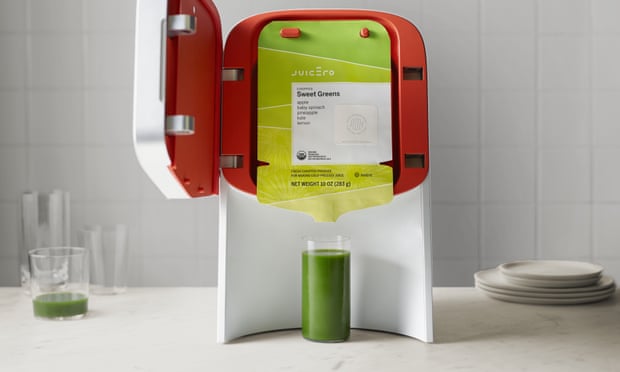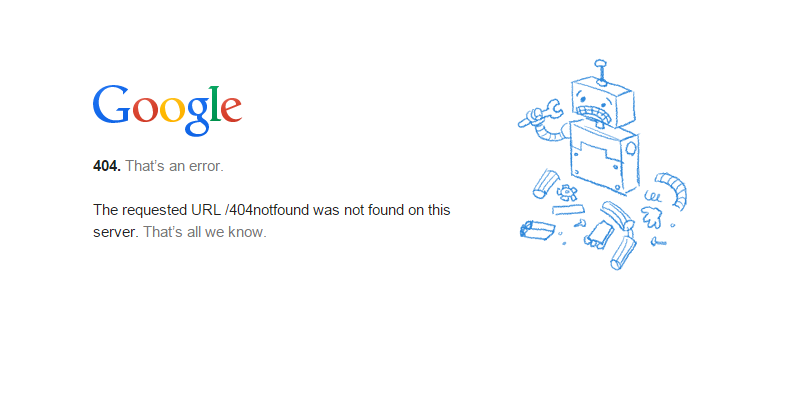Checklist time.
Marketing and target audience identification: check
Awesome content: check
Tools and tech: check.
Online Course: check.
But before you launch your amazing online course, you need to take a second to ask yourself the hard questions: are you ready for your online course launch?
We don’t want to freak you out in any way. But the final moments before a product launch are the most important. Once you’ve created hype, launched, and released your online product, it’s incredibly tricky to amend or alter your course.
If there’s something wrong with one of the modules and students can’t watch a required video, you may find yourself losing students by the handful. Your audience will be merciless if a link doesn’t work, a pdf is missing, or something isn’t quite up to scratch.
Before you release your awesome course into the wild, take a minute to carefully consider these points. Ask yourself the hard questions now, and avoid the harder work later.
Are You Ready for a Product Launch?
It might be tempting to skip this step but trust us when we say that this first step is important.
Sure, there are many advantages to doing a launch, but many entrepreneurs overlook the huge investment needed to pull it off.
Startups will pour huge amounts of time, energy, and resources into a product launch that was doomed to fail from the start, for reasons ranging from lacking a defined market, to the company being unable to handle the sudden rapid growth.
The majority of these problems could be avoided before you even begin preparing for the launch, all by simply asking yourself, “am I ready/willing/able to do this?”
Even Jeff Walker, the man behind the product launch formula, advises startups to be patient and cautious. “I think a big part of it is the ability to delay gratification—being willing to put in the work now, knowing it’s not going to pay off for three months or six months or two years,” he says.
Let’s take it back to the basics to make sure you are ready to launch.
The Basics: Anatomy of a Product Launch
By definition, a product launch is when a company launches, or in our case re-launches, a product into the market. It sounds fairly simple, right?
Done correctly, however, there are many steps that go into creating a successful product launch.
In our experience, there are five distinct phases:
- Product development: This is when you make sure that you have a great product in the first place. When it comes to your online course, planning is vital. It won’t matter unless you have something worth launching.
- Planning: When you put together your product launch team and figure out the essentials and how it is you’re going to move forward. This includes working out details like what your story is going to look like and what the launch sequence is going to be. This can take months before everyone fully agrees on what the right steps are and how to proceed. We saved ourselves a lot of time in the planning process by using the Jeff Walker approach. This is possibly the most important phase of any product launch, since how well you prepare and plan greatly determines how your launch is going to go.
- Pre-Launch: The third phase of a launch is when you begin putting all your planning into action. This is when you need to start thinking about generating hype and as many warm leads as possible. That means everything from bolstering your email list and creating launch-related content to reaching out to influencers to work with. Your pre-launch period starts from when you first start putting it all together to your actual launch date, meaning that this phase can take anywhere from a month to well over a year depending on how big you want your launch to be.
- Launch: Crunch time. When everything finally comes together and all your months of planning and preparation finally come together. This is usually a period that doesn’t go on any longer than a week or so where you really push your live product as much as possible. This phase includes activities like Facebook campaigns and making sure that you have proper onboarding practices. Some startups skip straight to this phase when they do their first product launch, only to realize that there is a lot of work they should have done ahead of time. Don’t make that mistake.
- Review: The final phase is sometimes known as the post-mortem, depending on how morbid you’re feeling. When the dust has settled and everything is done, take stock of what went great and what could have gone better, so next time you can do an even more epic product launch!
Let’s begin by asking the tough questions. Who knows, maybe you’ll be able to stop a potential disaster before it happens.
READ MORE: How to Create an Online Course Like Foundr
Do I Have a Validated Product?
Validating your product happens during the early days of crafting your online course, usually during the product development stage.
One of the most common pitfalls of a product launch is releasing a product that nobody actually wanted in the first place. Before you launch any product, make sure that you have a good product, with a market that actually wants it, first and foremost.
Do you remember the Juicero?
Springing into existence in 2013, Juicero was a company that sold a fancy device for juicing. The Juicero Press, designed by Swiss designer Yves Béhar, was a Wi-Fi-connected juicer that used single-serving packets of pre-juiced fruits and vegetables. These little juice packets were sold exclusively by the company by subscription. The price for a Juicero Press is $400, plus the cost of individual juice packs delivered weekly.
A year after launching, they received $US120 million in venture capital funding from several backers including Google’s parent company Alphabet, and the founder Doug Evans was loudly comparing himself to Steve Jobs, and that the Juicero wielded four tons of force—“enough to lift two Teslas!”

The product launched, the world watched, and suddenly it became clear what the big glaring problem was.
You can squeeze the Juicero bags with your bare hands.
Not only was the $400 machine bulkier than initially thought, but Bloomberg also performed a well-publicized test pitting a “Juicero machine against a reporter’s grip”. Squeezing the bag by hand was much faster than using the machine.
Juicero fired back announcing that the machine was a safeguard to make sure customers didn’t drink expired packs, because the juicer’s Wi-Fi connection and QR code reader would scan each product for expiry dates. Again, this flopped when it was noted that the expiry date was listed on the juice bags in plain text.
The cherry on top of this product flop: the amount of waste created from the single-use juice packs.
The world laughed at the superfluous product, media outlets the world over had a field day mocking the product, and in 2017, Juicero shut its doors.
What Juicero failed to do properly, and what you’re going to avoid, is that they didn’t stop to ask themselves the all-important question: is this a validated product, and does the market want this?
Kurt Jetta, who runs retail and consumer data firm Tabs Analytics notes that “It’s very difficult to differentiate yourself in the food and beverage sector[…]entrepreneurs may be tempted to have a technology angle when it’s not really there.”
It marketed itself as a new-innovation in the food and beverage industry, despite the fact that outside of a few very niche areas, no one actually wanted it. The product wasn’t validated, at least not by the audience they were after.
We’re not saying that your online course is going to flop the same way Juicero flopped, but we want to drive home the importance of validating your product. Your course might be the greatest project you’ve ever worked on, showcasing your expert knowledge with amazing content and high-def video production, but if no one want’s your product then it’s a waste.
Before you launch, take a step back and ask yourself honestly if you really have a validated product. Without proper validation, you’re just launching to an empty room.
READ MORE: How to Build a Profitable Marketing Strategy
Is my Marketing up to Scratch?
One of the worst things that can happen to a product launch is getting everything right, only to stumble at the finish line. It doesn’t matter how fantastic your product may be, if no one even knows it exists you’re not going to be selling anything.
We call that a “build it and they will come” mindset, and it is bad news.
When we talk about marketing what I’m talking about is how well you’re able to generate interest and hype into your product before it even launches. Where product launches often stumble is the fact that they haven’t bothered to set up the proper channels to get their message out there. Or they simply rush through the planning phase fail to come up with the right story or marketing message.
A great example of this would be Google Glass. A truly revolutionary device with loads of applications and features but, in the end, their launch flopped hard. When you take a look at it, Google Glass did pretty much did everything right, they got their product into the hands of the right influencers, and they treated their launch as an event.

But where they stumbled was that, while it was the device that sci-fi lovers had dreamed about for years, the general consumer had no idea what to do with it.
Sure there were loads of ads and tech reviews explaining the features and how revolutionary it was. But what they failed to do was to hone in on was one of the most basic lessons in marketing: solve a customer’s problem.
People just didn’t know what to do with the Google Glass even if they had it, for all of its features no one knew why they would need it in the first place. It didn’t solve any problems or issues that anyone had at the time so in the end, it was quietly shelved until the relaunch.
When you’re developing a product it’s easy can get caught up in how amazing or innovative it is, and it very well could be. After all, you’re the developer, you know exactly what it’s all about. But unless you can articulate that to your audience, they’re not going to understand what you think is inherently obvious.
So, take a step back and look at your product with fresh eyes. Now take a look at your marketing and ask yourself who you’re selling to. Are you selling to you? Or are you selling to your customer?
READ MORE: Psychographics 101: Everything You Need to Know; How It’s Used in Marketing
Can my Business Support Sudden Growth?
Another big pitfall is failing to prepare for the sudden surge in growth you’ll face if things go well. I know what you’re thinking, “How can growth be a bad thing?” You’ll actually force yourself to think about the problems your sudden growth will bring and the changes you’ll need to make to prepare for it.
Don’t get stuck playing catch-up.
Suddenly finding your emails littered with new student signups is usually a good thing. But only if you’re prepared for it.
Think of it like this. Could you run a full marathon right now without any training? With all due respect to the fitness of our readers, I’m going to assume that most of you said: no.
The growth of your product is the same thing. When your business grows, you will encounter problems that you may never have thought about before adding this whole new layer of stress onto yourself and your company.
Too many businesses make the mistake of thinking that everything will stay the same after a product launch. That they’ll be able to reap all the benefits and rewards without having to change how their business functions.
You have to take the time to do some strategic planning for your future.
READ MORE: How Foundr Created it’s First Product Launch
Do All My Links, Media, and Files Work?
Did you know that the average web user expects pages to load in two seconds or less, down from four seconds in 2006; and after three seconds, up to 40% will abandon your site. Tough crowd, huh?
If you want your product to be a success, you have to make sure with every fiber in your being that every single link, file, image, video, and document is in working order.
Links:
A broken or dead link is a link that you click but doesn’t work or doesn’t take you to the page you were meant to see.
Imagine you’re just jumping into the first lesson for a personal training program. You’re at the gym, you’re ready for day one, and you hit the link on your phone for “day 1 workout plan”. The link takes you to a dead page.
You close the window, head to Google, find a free article elsewhere, and wonder why you ever paid for the course in the first place if it doesn’t work.
 So, what causes broken links? There’s a number of reasons why the link doesn’t work, but the most common are:
So, what causes broken links? There’s a number of reasons why the link doesn’t work, but the most common are:
- A typo when you created the link
- Renaming or moving a page and not updating links accordingly
- Deleted media or pages
A broken link is easy to fix, but do a lot of damage when left unaided. Not only does it affect the all-important SEO rankings, but it also ruins the user’s experience, hurts your reputation and credibility, and makes your product seem rushed.
As an added blow, usually, when visitors land on a broken page and then leave within seconds, search engine algorithms pick up on this and lower your rankings.
We suggest using Google Search Console (GSC) for detecting pages on your site that return errors. You can find any nasty dead links by searching 404 pages on your site in Crawl-> Crawl Errors -> Not Found.
Video and Photo
Imagine you’re just jumping into the first lesson on a yoga course. You have your yoga mat ready, your yoga pants on, and you’re in the mood to flow through a good Vinyasa session. You press begin on the first video and see that the link you’re looking for is not available.
You close the site, head to YouTube, and wonder why you bothered in the first place.
Missing media makes your product look scrappy and outdated. Most platforms have different requirements for media (different resolution, formats, size, etc.) and it’s up to you, the creator, to make sure your content works.
For images, we find that the image file extensions that work well for sites are .jpg, .png, or .gif files. Reduce your image size if pages are loading slowly, we recommend using TinyPNG for this (it’s free), and always check to see if the images have the correct tags, links, or other metadata.
When it comes to videos for your course, you need to make sure they are optimized for the web. It’s a delicate balance of maintaining the quality as well as providing the right file size for students that might not have a strong internet connection or don’t want to get a huge internet bill.
At Foundr, we have hundreds of hours of video content, so we have to make sure that everything is running smoothly. All our courses have an adjustable resolution to suit any, and all bandwidths.

The rough rule of thumb is to keep videos under 1 GB for faster uploading/processing. You can reduce file size without compromising its quality by compressing your videos. For a free and easy compression tool, get something like Handbrake.
Try to make your uploads are:
- mp4 file
- h.264 codec
- 5,000–8,000 kbps target bitrate
- Individual file size around 1GB (for faster upload/processing)
- Video resolution: 1280×720 (HD) or 1920×1080 (FULL HD)
READ MORE: How To Develop An Online Course
Have You Proofread Copy and Cross-Checked Translations?
Did you see in the news the recent debacle with Amazon.com launching in Sweden?
At the end of October 2020, Amazon launched its Swedish website and entered into the world of Nordic e-commerce. However, it was quickly discovered that the website was awash with translation issues, crass typos, and other embarrassing gaffs.
The mistranslations were blamed on a dodgy translation bot, but the whole fiasco clouded what was supposed to be a successful launch. In fact, Nicklas Storakers, CEO of the Swedish price comparison service PriceRunner, said the launch was the “most botched work I have ever seen”.
Typos and mistranslations are small mistakes that have big consequences. Before you launch, spend as much time as possible reviewing copy for any mistakes or typos that you may have missed. We insist that you also get other people to do the same for you: friends, family, co-workers, anyone!
When it comes to translations, as Amazon learned, you can’t trust bots completely. You may need to hire someone externally to make sure that the translation works. There are little nuances and language inflections that AI isn’t able to pick up on (yet).
If possible, head to job board websites like Fiverr or UpWork, and look for proof-readers, editors, or translators. Spend a little money now and avoid losing money later.
Do I Have The Right Price-Point?
By now, you have ideally done countless hours of research and testing to see what price-point suits your content and audience, but have you taken the time to check whether this still stands?
At Foundr, we spend a ridiculous amount of time researching and assessing the correct price point for our courses. These prices that we list are not just off-the-cuff, they are value-based assessments and we are so confident that the price matches the value that we offer a 365-day money-back guarantee.

At Foundr, we use the “10x rule”.
Is it worth 10, or even 100x what we charge the customer? For us, yes. It’s our intellectual property, and it works. In fact, with the cost of production, filming, editing, hosting, and all the other tech stuff behind the scenes, we usually spend between $20k-$50k+ bringing a course to life.
Don’t let those big numbers freak you out though. For our first course launch, production cost us a few thousand dollars, and it sold for millions. As with everything in life, the high-end stuff only comes years later after the hard work.
It’s easy to sell when you know you are only charging 10% of what it is worth! This allows you to sleep at night and feel good about the value you are bringing to your customer.
Before you launch, reassess your prices. Pricing high or low, you need to always price and value with intention.
If you are charging too little, and you are basically eroding the perceived value of your course, you might be limiting your revenue. A lower price point may not necessarily be a point of concern, perhaps your lower point is a way to get boosted awareness, in which case you need to reassess the long-term plan.
At the other end of the spectrum, price your product too high and you may see nothing but tumbleweeds. A high-price point can suggest luxury or high-quality content, but if you can’t deliver the goods then you’ll have a lot of negative reviews demanding a refund.
Consider your price-point carefully, it’s a make or break!
Have I Reached Out To The Right People?
By now you should probably have a nice bundle of leads, emails, and interested people waiting for your course launch. Before launching, review your lists and contacts to make sure you’re hitting all your markets.
If you launch your product and you haven’t informed your intended audience, don’t be surprised if you don’t see sales rocketing through the roof on your launch day. Even overlooking strategic choices, such as offering launch discount codes or influencer collaborations can leave you feeling a little disheartened.
Have you contacted the right influencers? Do you want to offer these key people discount codes? Perhaps you forgot to send that follow-up email to an affiliate? By reviewing your contacts and your marketing strategy, you might pick up on gaps in your launch plan.
Have I Given Myself a Pat on The Back?
An essential one, don’t skip this one.
Before you launch, make sure to take time out to celebrate the fact that you’ve worked hard on something. Celebrating wins and acknowledging achievements is a crucial part of growth as an entrepreneur.
At Foundr, we do this by taking the team out for meals and drinks after a launch. At the very least, we try to stop and enjoy the moment.
What Are You Waiting For? Launch!
It’s time. You’ve checked everything off the list, the time to launch is here. Press the launch button, and keep your fingers crossed.
Launching a digital product is terrifying, trust us when we say we know how scary it is. But the good news is that failure is an opportunity for growth.
For every course we launch at Foundr, we send out a post-launch survey to find out why people did or didn’t buy. We spend a long time analyzing these answers and take the lessons learned into consideration for our next launch.
If you don’t make the millions of dollars you hoped you would, don’t despair. You have gathered actionable learnings for next time. If your survey shows that you’ve priced too high, then simply assess whether you can reduce the cost. If people report dead links, then you know what to do.
If people report that they loved the 7th module lesson, then you can analyze what they loved about it and replicate it in the future.
You win some, you lose some, but the only way to fail is to not launch.
Summary
Launching a digital product isn’t as easy as people think, but taking time out to reflect, assess, and ask questions before launching will make sure you avoid making silly mistakes.
How did you go with your first launch? We love hearing about your wins, lessons learned, and all the fun stuff. Drop a comment below with any burning questions, and our expert team will do their best to help you out.
The post Are You Ready For a Digital Product Launch? appeared first on Foundr.
via https://AiUpNow.com November 16, 2020 at 12:07AM by Perrie Kapernaros, Khareem Sudlow,
